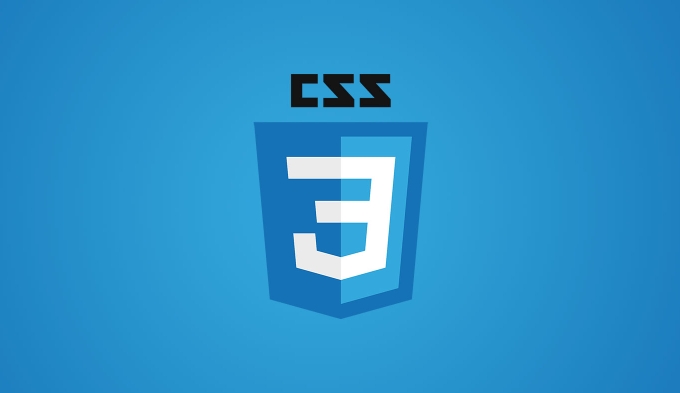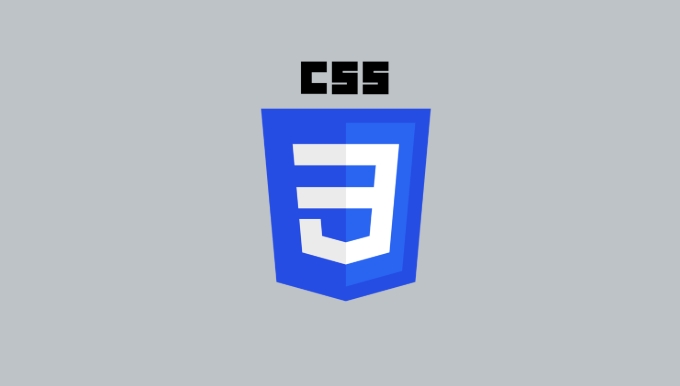Add viewport meta tags to ensure that the mobile device renders the page correctly; 2. Create a fluid layout using relative units such as percentages and rem; 3. Use CSS media queries to apply styles for different screen widths, and recommend mobile-first min-width breakpoints; 4. Use Flexbox or CSS Grid to achieve flexible and responsive layouts; 5. Use max-width: 100% and background-size: cover to adapt the image and media containers; 6. Use browser developer tools and real device testing to ensure cross-device compatibility. Combining these methods can make the website display and run well on all devices.

Making a website responsive with CSS means ensuring it looks good and functions well on all devices—desktops, tablets, and smartphones. Here's how to do it effectively:

1. Use the Viewport Meta Tag
Without this, your responsive CSS won't work properly on mobile devices.
Add this line inside the of your HTML document:

<meta name="viewport" content="width=device-width, initial-scale=1.0">
This tells the browser to set the width of the page to the device's screen width and set the zoom level to 1. Without it, mobile browsers may render your page as if it were on a desktop, making text and elements too small.
2. Use Fluid Layouts with Relative Units
Avoid fixed pixel widths. Instead, use relative units like percentages, em , rem , or fr (in CSS Grid).

Example:
.container {
width: 90%;
max-width: 1200px;
margin: 0 auto;
}This ensures the container scales with the screen size but doesn't stretch too wide on large screens.
Also, use rem or em for font sizes and spacing so they scale relative to user preferences or root font size.
3. Apply CSS Media Queries
Media queries let you apply styles based on device characteristics like screen width.
Common breakpoints:
/* Mobile first approach */
@media (max-width: 767px) {
/* Styles for small phones */
}
@media (min-width: 768px) {
/* Styles for tablets */
}
@media (min-width: 1024px) {
/* Styles for desktops */
}Example:
.sidebar {
width: 25%;
}
@media (max-width: 768px) {
.sidebar {
width: 100%;
}
} Tip: Design mobile-first—start with mobile styles, then enhance for larger screens using min-width .
4. Use Flexbox or CSS Grid for Layouts
These modern layout systems make responsiveness easier.
Flexbox example:
.nav {
display: flex;
flex-wrap: wrap;
justify-content: space-between;
} On small screens, flex-wrap: wrap lets items stack when space is limited.
Grid example:
.grid-container {
display: grid;
grid-template-columns: repeat(auto-fit, minmax(250px, 1fr));
gap: 1rem;
}This automatically adjusts the number of columns based on available space.
5. Make Images and Media Responsive
Prevent images from overflowing their containers:
img {
max-width: 100%;
height: auto;
}This ensures images scale down on smaller screens without losing aspect ratio.
For background images, use:
background-size: cover; background-position: center;
6. Test on Real Devices and Use DevTools
Use browser developer tools (like Chrome DevTools) to simulate different screen sizes. But also test on actual phones and tablets—emulators don't always reflect real-world performance or touch behavior.
Basically, responsible design is about flexibility: flexible layouts, flexible images, and smart use of media queries. Combine these techniques, and your site will adapt smoothly across devices.
The above is the detailed content of How to make a website responsive with CSS?. For more information, please follow other related articles on the PHP Chinese website!

Hot AI Tools

Undress AI Tool
Undress images for free

Undresser.AI Undress
AI-powered app for creating realistic nude photos

AI Clothes Remover
Online AI tool for removing clothes from photos.

Clothoff.io
AI clothes remover

Video Face Swap
Swap faces in any video effortlessly with our completely free AI face swap tool!

Hot Article

Hot Tools

Notepad++7.3.1
Easy-to-use and free code editor

SublimeText3 Chinese version
Chinese version, very easy to use

Zend Studio 13.0.1
Powerful PHP integrated development environment

Dreamweaver CS6
Visual web development tools

SublimeText3 Mac version
God-level code editing software (SublimeText3)

Hot Topics
 How to use PHP to build social sharing functions PHP sharing interface integration practice
Jul 25, 2025 pm 08:51 PM
How to use PHP to build social sharing functions PHP sharing interface integration practice
Jul 25, 2025 pm 08:51 PM
The core method of building social sharing functions in PHP is to dynamically generate sharing links that meet the requirements of each platform. 1. First get the current page or specified URL and article information; 2. Use urlencode to encode the parameters; 3. Splice and generate sharing links according to the protocols of each platform; 4. Display links on the front end for users to click and share; 5. Dynamically generate OG tags on the page to optimize sharing content display; 6. Be sure to escape user input to prevent XSS attacks. This method does not require complex authentication, has low maintenance costs, and is suitable for most content sharing needs.
 PHP creates a blog comment system to monetize PHP comment review and anti-brush strategy
Jul 25, 2025 pm 08:27 PM
PHP creates a blog comment system to monetize PHP comment review and anti-brush strategy
Jul 25, 2025 pm 08:27 PM
1. Maximizing the commercial value of the comment system requires combining native advertising precise delivery, user paid value-added services (such as uploading pictures, top-up comments), influence incentive mechanism based on comment quality, and compliance anonymous data insight monetization; 2. The audit strategy should adopt a combination of pre-audit dynamic keyword filtering and user reporting mechanisms, supplemented by comment quality rating to achieve content hierarchical exposure; 3. Anti-brushing requires the construction of multi-layer defense: reCAPTCHAv3 sensorless verification, Honeypot honeypot field recognition robot, IP and timestamp frequency limit prevents watering, and content pattern recognition marks suspicious comments, and continuously iterate to deal with attacks.
 How to build a PHP Nginx environment with MacOS to configure the combination of Nginx and PHP services
Jul 25, 2025 pm 08:24 PM
How to build a PHP Nginx environment with MacOS to configure the combination of Nginx and PHP services
Jul 25, 2025 pm 08:24 PM
The core role of Homebrew in the construction of Mac environment is to simplify software installation and management. 1. Homebrew automatically handles dependencies and encapsulates complex compilation and installation processes into simple commands; 2. Provides a unified software package ecosystem to ensure the standardization of software installation location and configuration; 3. Integrates service management functions, and can easily start and stop services through brewservices; 4. Convenient software upgrade and maintenance, and improves system security and functionality.
 What are common CSS browser inconsistencies?
Jul 26, 2025 am 07:04 AM
What are common CSS browser inconsistencies?
Jul 26, 2025 am 07:04 AM
Different browsers have differences in CSS parsing, resulting in inconsistent display effects, mainly including the default style difference, box model calculation method, Flexbox and Grid layout support level, and inconsistent behavior of certain CSS attributes. 1. The default style processing is inconsistent. The solution is to use CSSReset or Normalize.css to unify the initial style; 2. The box model calculation method of the old version of IE is different. It is recommended to use box-sizing:border-box in a unified manner; 3. Flexbox and Grid perform differently in edge cases or in old versions. More tests and use Autoprefixer; 4. Some CSS attribute behaviors are inconsistent. CanIuse must be consulted and downgraded.
 Describe the `vertical-align` property and its typical use cases
Jul 26, 2025 am 07:35 AM
Describe the `vertical-align` property and its typical use cases
Jul 26, 2025 am 07:35 AM
Thevertical-alignpropertyinCSSalignsinlineortable-cellelementsvertically.1.Itadjustselementslikeimagesorforminputswithintextlinesusingvalueslikebaseline,middle,super,andsub.2.Intablecells,itcontrolscontentalignmentwithtop,middle,orbottomvalues,oftenu
 What is the accent-color property?
Jul 26, 2025 am 09:25 AM
What is the accent-color property?
Jul 26, 2025 am 09:25 AM
accent-color is an attribute used in CSS to customize the highlight colors of form elements such as checkboxes, radio buttons and sliders; 1. It directly changes the default color of the selected state of the form control, such as changing the blue check mark of the checkbox to red; 2. Supported elements include input boxes of type="checkbox", type="radio" and type="range"; 3. Using accent-color can avoid complex custom styles and extra DOM structures, and maintain native accessibility; 4. It is generally supported by modern browsers, and old browsers need to be downgraded; 5. Set accent-col
 CSS transitions tutorial
Jul 26, 2025 am 09:30 AM
CSS transitions tutorial
Jul 26, 2025 am 09:30 AM
CSStransitionsenablesmoothpropertychangeswithminimalcode,idealforhovereffectsandinteractivefeedback.1.Usethesyntaxtransition:propertydurationtiming-functiondelay;todefinetransitions,liketransition:background-color0.3sease0.1s;.2.Specifytransition-pro
 How to change text color in CSS?
Jul 27, 2025 am 04:25 AM
How to change text color in CSS?
Jul 27, 2025 am 04:25 AM
To change the text color in CSS, you need to use the color attribute; 1. Use the color attribute to set the text foreground color, supporting color names (such as red), hexadecimal codes (such as #ff0000), RGB values (such as rgb(255,0,0)), HSL values (such as hsl(0,100%,50%)), and RGBA or HSLA with transparency (such as rgba(255,0,0,0.5)); 2. You can apply colors to any element containing text, such as h1 to h6 titles, paragraph p, link a (note the color settings of different states of a:link, a:visited, a:hover, a:active), buttons, div, span, etc.; 3. Most






